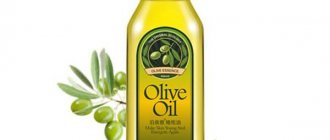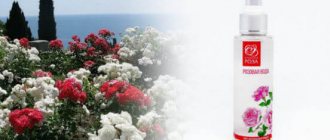Caffeine is a neurostimulant that is part of the methylxanthines group. The main substance that has the effect is an alkaloid of plant origin, which is extracted from cola fruits, coffee beans and tea leaves. Its pharmacological properties are similar to theobromine and theophylline. Undissolved caffeine is a powdery white substance that tastes bitter and has no odor. For cosmetological purposes, ten to twenty percent solutions of caffeine and whey are used, characterized by a multicomponent composition, containing caffeine.
Effect on adipose tissue and skin
The way caffeine works is to block the effects of phosphodiesterases. The result of the fact that the enzyme in the body’s cells is suppressed is the accumulation of cyclic adenosine monophosphate, which activates the breakdown of glycogens and fats, metabolism in tissues and organs. In addition, caffeine provides relief from fat accumulation by reducing tubular reabsorption of electrolytes.
The alkaloid is characterized by a tonic effect on the skin of the face and body. The enrichment of caffeine with lipids helps restore the water balance in the skin and accelerate regeneration. It ensures the normalization of the functioning of the sebaceous glands and has a warming effect. Its use helps improve color and even out skin texture.
Xanthinol nicotinate (complamine, theonicol) (Yugoslavia)
Xanthine salt of nicotinic acid . Combines the properties of substances from the theophylline group and nicotinic acid. Vasodilator. Improves blood circulation, inhibits platelet aggregation, reduces cholesterol levels, and increases blood flow to the skin.
It is used as a traffic-stimulating agent for long-healing wounds, scleroderma, in the postoperative period to accelerate scarring, to prevent age-related changes in the skin, wrinkles and to treat cellulite.
Release form: 2 ml ampoules of 15% solution.
What problems can be solved with caffeine?
You can name the indications for using the drug. We are talking, first of all, about problems with obesity, cellulite, and a “double chin.” In addition, hair loss is treated with caffeine-containing medications. In such situations, the alkaloid as a local irritant ensures hair growth.
Cosmetic procedures that use caffeine are characterized by the following results:
- Improving microcirculatory processes of lymph and blood.
- Increased muscle tone: the skin tightens and becomes smooth.
- Restoring the balance of water and lipids in the skin.
- Reducing pores on the face.
- By removing excess fluid from tissues: a person gets rid of swelling.
- Eliminating the “orange peel”
- Getting rid of excess weight due to a layer of fat.
Organic silicon (Si) (Algizium, Trisilanol) (Spain)
Silicon is a structural element of connective tissue . Silicon stimulates the renewal of fibroblasts, promotes the regeneration of elastin and collagen fibers, and prevents the formation of “cross-linked” collagen in rough fibrous adhesions. The drug promotes the synthesis of glycosaminoglycans, which prevents dehydration and leads to improved tissue turgor. Silicon exhibits antioxidant properties. At a concentration of 1%, silicon exhibits lipolytic properties, stimulating the activity of cAMP. The process of converting triglycerides into free fatty acids and glycerol is activated.
It has a melanostimulating effect (vitiligo therapy).
Used for age-related skin changes, hypo and atrophic scars, stretch marks (stretch marks), cellulite, focal obesity, acne, trophic ulcers, vitiligo, hypopigmentation.
Release form: 5-10 ml ampoules of 0.5, 1 and 2% solution.
About the use of caffeine
The alkaloid is often included in products such as anti-cellulite cream and anti-aging serum. Ultrasound and microcurrents make it possible to use caffeine in the form of a concentrate. Bipolar iontophoresis is performed using caffeine sodium benzoate (you can do this at home). This lasts ten minutes. Ten minutes is enough for the substance to penetrate 5 mm deep into the skin when a low voltage current is applied.
Mesotherapy uses pure caffeine and caffeine cocktails. Due to the fact that caffeine stimulates the sympathetic nervous system and its use increases blood pressure, it is not recommended to take increased doses of the alkaloid. For patients who do not have a tendency to hypertension, no more than 5 ml of the substance can be administered at a time. For the rest - up to 2 ml. For the meso-cocktail, the alkaloid is mixed with procaine, a mild pain reliever that relaxes the smooth muscles of blood vessels and tissues. In addition, in such a solution, caffeine will penetrate the cell membrane faster.
For injections of caffeine-containing compounds, the nappage or papular technique is used. The nappage technique is characterized by performing several frequent injections with a volume of 0.02 ml. The needle can be inserted into the area of the face, neck and décolleté no more than 0.5 mm. When the procedure is carried out to correct the figure or eliminate cellulite, deep nappage is done. To get the active substance under the skin into tissue with fatty deposits, the needle must go deeper by 1 cm. The papular technique involves introducing the composition in such a way that “nodules” form inside the skin. The purpose of the manipulation is to improve the deposition of substances to prolong their therapeutic effects. The technique is used on the cheekbones, forehead, and lower part of the face.
Carrying out procedures using caffeine-containing compounds is possible at home. For this purpose, a special device is required - a mesoscooter. Microneedling therapy involves the use of both pure caffeine and a cocktail component. To carry out one procedure, take 1-2 ml for the face, 6 ml for the body. All required components are drawn up and mixed using a syringe. Then the skin is cleansed and disinfected. The composition is applied dropwise to selected areas by squeezing it out of a syringe. Then they go over the skin with a roller - 4-6 times in each direction.
Caffeine (Koffeinum) (Spain, France)
Plant alkaloid, purine derivative . Its chemical structure is similar to theophylline and theobromine.
Caffeine is involved in the lipolysis process by inhibiting the action of phosphodiesterases. The drug has a stimulating effect on the central nervous system, increases respiratory rate, tones smooth muscle cells, and increases diuresis.
Promotes the release of catecholamines, an increase in the amount of cAMP, the hydrolysis of triglycerides in adipose tissue into glycerol and free fatty acids.
Used in the treatment of cellulite and local obesity.
Buy caffeine 20%, 6 ml
Release form: ampoules 1 and 2 and 6 ml of 20-25% solution.
Is coffee in cosmetics a marketing ploy or a noticeable benefit?
Do you start your day with a cup of aromatic coffee? Most likely, yes - after all, it is the most popular drink in the world. It’s not for nothing that coffee shops are opening on every corner.
The first mention of an invigorating drink dates back to the 15th century. The Turks were the first to roast coffee beans over an open fire and brew it - it was the birth of a star. By the middle of the 17th century, coffee shops had already opened throughout Europe, and even in London there were more than 300 of them. The coffee business became extremely profitable. Modern scientists have proven that 2 cups of coffee a day prevents Parkinson's disease, as well as liver and larynx cancer.
The cosmetics industry could not ignore these fragrant grains - they made their way from the kitchen to the spa, and then to the bathroom shelves. Let's see why coffee extracts in cosmetics are still trending.
Green, raw coffee is used for cosmetic purposes.
The Arabica variety is pressed into oil and produced into oil extracts rich in essential fatty acids, phytosterols and vitamin E.
Robusta is used to obtain various types of water-soluble extracts, high in caffeine and caffeic acid.
Green Coffee Extracts
Robusta is native to West Africa and contains much higher amounts of caffeine and polyphenols than Arabica. Unroasted beans contain one of the most powerful forms of antioxidants, chlorogenic acid (caffeic acid). This acid belongs to the group of polyphenolic compounds. It is capable of providing antioxidant, photoprotective, depigmenting and anti-inflammatory effects.
That is, the presence of this acid can help protect the skin from UV radiation and minimize the damage caused by it.
In studies by Japanese scientists, chlorogenic acid reduces redness caused by UV radiation within 24 hours of application to the skin.
Caffeine's ability to protect against photoaging was studied in Portugal and Brazil. True, they have so far been carried out on mice, but its ability to block the harmful effects of the sun has been confirmed. Under the influence of caffeine, damaged cells immediately die and do not harm healthy ones. In addition, caffeine stimulates enzymes responsible for the production of cholesterol, which is very important for dry and mature skin - the protective layer is restored and moisture is retained in the skin.
Can it cause insomnia?
Yes, if you drink coffee in the afternoon and in large doses.
And if you drink coffee in the first half, it’s unlikely, since caffeine is eliminated from the body within 8–10 hours, after which no more than 25% of the original dose remains in the blood. You should also note the strength of the drink, as well as the characteristics of your body. Some people have severe reactions to caffeine. The “vigor” obtained after taking the drink can go beyond its limits, and this will lead to irritability, insomnia and headaches. Caffeine increases blood pressure, or better yet, it can increase blood pressure. Again, this depends on personal characteristics. If you notice this phenomenon in yourself, and it is discomfort for you, then either reduce the dose or stop completely.
Caffeine and exercise. By invigorating yourself with one cup of coffee, you increase the body's endurance, and, consequently, increase physical activity. Many people use this when doing fitness.
Caffeine affects calcium metabolism in the body. This effect of caffeine – “calcium leaching” – is observed, but only if you consume a lot of caffeine (about 750 mg per day). It is unlikely that anyone achieves such results. However, if this is the case, then add milk to your coffee (this will compensate for the effect of caffeine). Nutritionists recommend that older people be more careful with coffee, but not even because caffeine will cause osteoporosis - there are already enough diseases at a serious age for other reasons. And in such a situation it is better to be careful.
The value of caffeine in cosmetology
Even in ancient times, ground coffee beans were used to prepare exfoliating masks and scrubs, which helped stimulate cellular metabolism and burn subcutaneous fats, increasing blood microcirculation. Caffeine is an indispensable component in anti-cellulite cosmetics and cosmetology products for figure correction and weight loss. In addition, the substance can have a pronounced tonic effect on the skin, quickly smoothing facial wrinkles and effectively eliminating congestion. Helps prevent skin cancer.
Natural components that contain an alkaloid help get rid of toxins from the skin and break down fats. In cosmetics, there are a lot of figure-sculpting and contour-correcting creams that contain this substance, since it is the undisputed leader in the fight against cellulite. Increases blood circulation, activates fat and water metabolism, accelerates lipolysis, reduces subcutaneous fat deposits.
It assists in the flow of energy into the hair follicle, which makes the hair growth phase longer, keeping hair thick and healthy, which is confirmed by modern dermatological research in cosmetology.
Cosmetics with caffeine:
- tightens and tones;
- helps break down fat deposits;
- increases blood circulation;
- improves skin cell metabolism;
- has a lymphatic drainage effect;
- eliminates cellulite;
- smoothes wrinkles, providing a lifting effect to the face;
- promotes hair growth;
- eliminates bags and swelling under the eyes.
Return to content
The benefits and harms of caffeine
There has long been debate about the benefits and harms of coffee, and all this is due to the caffeine content in it.
Caffeine is an alkaloid, it can increase performance, invigorate, enhance physical and mental activity, but a large dose will lead to depletion of nerve cells. Many scientists talk about this. If you drink coffee frequently, caffeine will be present in all organs. What does "often" mean? Everyone must experimentally determine and choose their daily dose of coffee. The main thing is not to feel dependent on this drink. Although dependence on coffee is viewed differently by researchers. Some say that it should not be given importance, while others believe that the body gets used to caffeine, just like sugar, alcohol and smoking.
However, dependence on coffee, in other words, on caffeine, should not be compared with dependence on alcohol or smoking, especially on drugs.
Types of oils and areas of application
For example, hazelnut, poppy, black cumin, jojoba, argan and borage oils are excellent for oily skin. For dry – rice bran oil, avocado, wheat germ, argan, all butters. For sensitive people – jojoba and wheat germ. For older people – rosehip oil, pomegranate seeds, green coffee. The latter is also suitable for the area around the eyes. For body care you can use any butters and coconut oil. Coconut oil and broccoli oil are especially good for hair.
How caffeine affects the body
The benefits of caffeine lie not only in the cheerfulness that the drink gives. It is a natural stimulant that:
- Increases heart rate and reduces drowsiness;
- Stimulates blood pressure and improves concentration;
- Improves digestion and stimulates the breakdown of fats in the body.
With the help of caffeine, the tone of both the cardiovascular and digestive systems and nerve cells is maintained. The benefits of caffeine are obvious, as is the harm it can cause if the prescribed daily or single dose is exceeded. It is allowed to consume up to 4 cups of the aromatic drink in the daily diet. Otherwise, coffee turns into an addictive product, and also causes sleep disturbances and increased excitability.










